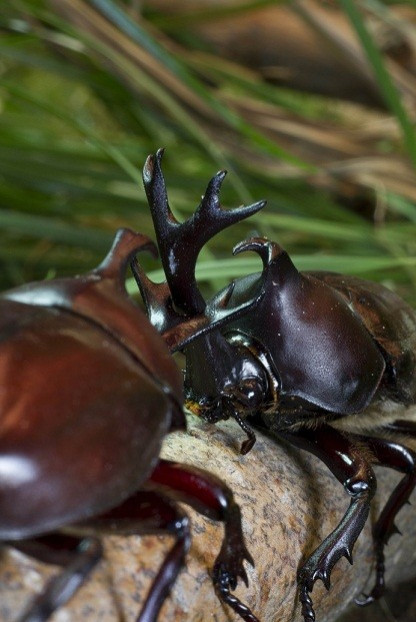Pulped Cockroach Burger Anyone? It May Be The Only Way Feed The Planet

If humans want to avoid the threat of a global famine, then they need to eat more bugs.
This stomach-churning conclusion may sound far-fetched, but it's actually the result of United Nations research into feeding the world in the coming decades.
In January, the UN's Food and Agriculture Organization (FAO), along with experts from Holland's Wageningen University, put together an action plan of sorts to introduce the idea of eating insects to Europe and the U.S.
And while entomphagy (bug munching) may sound bizarre to Western ears, for over 80 percent of the world's population, the idea of eating fried ant larvae is as normal as chowing on beef jerky.
"By 2020, you will be buying insects in supermarkets," Professor Marcel Dicke, a Wageningen University expert in insect cultivation and eating, told Wired last year. "We will be amazed that in 2011 people didn't think it was going to happen. We have already seen the introduction of eggplants, sushi, things people never ate here."
Indeed, go back 200 years and Americans, according to the Arizona Star, saw lobster as useful for one thing, fertilizer. This bottom-feeding crustacean was reserved for the very poorest in society, with some areas even legislating against giving it to prisoners more than once a week as it constituted "cruel and unusual punishment."
However, changing attitudes aside, the simple truth is that bugs and their excretions are already in your food.
Ever had a red-flavored yogurt, juice drink or ice cream? Then you've almost certainly been consuming the juice of the female cochineal insect.
The coloring agent carmine, a widely used food dye, is actually an acid extracted from the cochineal and its eggs. These little critters are found on prickly pear cactus plants located primarily in South America and Europe, with the acid extracted, collected and pasteurized to rid the carmine of harmful microorganisms such as salmonella.
But why bother introducing "mini-livestock" into the Western diet in the first place?
For starters, the amount of beef, pork, chicken and other conventional meats consumed is, by most estimates, unsustainable. We simply don't have the land or the resources to raise enough livestock to feed the roughly 2.5 billion extra mouths set to inhabit the planet by 2050.
For instance, it takes roughly ten grams of feed to produce one gram of beef and three grams of pork. The same amount will produce nine grams of edible insect meat, according to Wageningen University's researchers.
Insects are also a vastly more efficient source of protein and other essentials. According to the FAO, "For every 100 grams of dried caterpillars, there are about 53 grams of protein, about 15 percent of fat and about 17 percent of carbohydrates."
"The insects are also believed to have a higher proportion of protein and fat than beef and fish with a high energy value."
The EU is also getting in on the act, and it's offering €3 million ($3.6 million) to researchers who can come up with a viable way of introducing insects into the European diet.
Despite the obvious benefits, trying to persuade the average European or American to switch from their lamb chop to a plate of fried grasshoppers is going to be an uphill struggle.
But fear not, the UN has (some) suggestions here, too.
The 37 international experts who gathered in Rome for January's FAO conference came up with a series of measures, including grinding up insects to make them more palatable.
"Whole insects or insect-based products?" the authors muse. "Maybe better for PR to lean toward insects as an ingredient to more accepted products?"
Indeed, the idea of pulping one's pupae is something Professor Dicke also thinks is a winner.
"I think it will start with ground-up insects in sauces and burgers. Grinding them up will make them look more palatable," he told Wired.
So, where will these new beetle burgers be sold?
"Big restaurants [McDonalds, etc.] are doing locally adapted menus, so this is an opportunity," the FAO paper rather optimistically proffers.
The researchers also suggest, among more conventional avenues, using comic books as a way to promote insect consumption, even putting forward the idea of using Manga-style messages in Japan.
" ... Controversial words" such as "waste" and "insect meal" should also be avoided, according to researchers.
So, Manga-themed Locust McNuggets, it is then.
© Copyright IBTimes 2024. All rights reserved.











